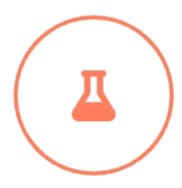IBM is the second-largest predictive analytics and Machine Learning solutions provider globally The Forrester Wave report, September 2018. A joint partnership with Data2businessinsights and IBM introduces students to integrated blended learning, making them experts in Big Data Engineering. This Big Data Engineer certification course developed in collaboration with IBM will make students industry ready to start their career as Big Data Engineer.
IBM is a leading cognitive solution and cloud platform company, headquartered in Armonk, New York, offering a plethora of technology and consulting services. Each year, IBM invests $6 billion in research and development and has achieved five Nobel prizes, nine US National Medals of Technology, five US National Medals of Science, six Turing Awards, and 10 Inductions in US Inventors Hall of Fame.
What can I expect from this Data2businessinsights Big Data Engineer Master's Program developed in collaboration with IBM?
Upon completion of this Big Data Engineer Master's Program, you will receive the certificates from IBM(for IBM courses) and Data2businessinsights for the courses in the learning path. These certificates will testify to your skills as an expert in Big Data Engineering. You will also receive the following:
- Access to IBM Cloud Lite Account
- Industry-recognized Big Data Engineer Master's Certificate from DeepNeuron
Data Scientist is one of the hottest professions.IBM predicts the demand for Data Scientists will rise by 28% by 2020. Data Scientist Master’s program co-developed with IBM encourages you to master skills including statistics, hypothesis testing, data mining, clustering, decision trees, linear and logistic regression, data wrangling, data visualization, regression models, Hadoop, Spark, PROC SQL, SAS Macros, recommendation engine, supervised, and unsupervised learning and more.
- Machine Learning project management methodology
- Data Collection - Surveys and Design of Experiments
- Data Types namely Continuous, Discrete, Categorical, Count, Qualitative, Quantitative and its identification and application
- Further classification of data in terms of Nominal, Ordinal, Interval & Ratio types
- Balanced versus Imbalanced datasets
- Cross Sectional versus Time Series vs Panel / Longitudinal Data
- Batch Processing vs Real Time Processing
- Structured versus Unstructured vs Semi-Structured Data
- Big vs Not-Big Data
- Data Cleaning / Preparation - Outlier Analysis, Missing Values Imputation Techniques, Transformations, Normalization / Standardization, Discretization
- Sampling techniques for handling Balanced vs. Imbalanced Datasets
- What is the Sampling Funnel and its application and its components?
- Population
- Sampling frame
- Simple random sampling
- Sample
- Measures of Central Tendency & Dispersion
- Population
- Mean/Average, Median, Mode
- Variance, Standard Deviation, Range
A Big Data is the top ranking professional in any analytics organization. Glassdoor ranks Big Datas first in the 25 Best Jobs for 2019. In today’s market, Big Datas are scarce and in demand. As a Data Scientist, you are required to understand the business problem, design a data analysis strategy, collect and format the required data, apply algorithms or techniques using the correct tools, and make recommendations backed by data.
Data Visualization helps understand the patterns or anomalies in the data easily and learn about various graphical representations in this module. Understand the terms univariate and bivariate and the plots used to analyze in 2D dimensions. Understand how to derive conclusions on business problems using calculations performed on sample data. You will learn the concepts to deal with the variations that arise while analyzing different samples for the same population using the central limit theorem.
- Gain an in-depth understanding of data structure and data manipulation
- Understand and use linear and non-linear regression models and classification techniques for data analysis
- Obtain an in-depth understanding of supervised and unsupervised learning models such as linear regression, logistic regression, clustering, dimensionality reduction, K-NN, and pipeline
- Perform scientific and technical computing using the SciPy package and its sub-packages such as Integrate, Optimize, Statistics, IO, and Weave
- Gain expertise in mathematical computing using the NumPy and Scikit-Learn packages
- Understand the different components of the Hadoop ecosystem
- Learn to work with HBase, its architecture, and data storage, learning the difference between HBase and RDBMS, and use Hive and Impala for partitioning
- Understand MapReduce and its characteristics, plus learn how to ingest data using Sqoop and Flume
- Master the concepts of recommendation engine and time series modeling and gain practical mastery over principles, algorithms, and applications of machine learning
- Learn to analyze data using Tableau and become proficient in building interactive dashboards























